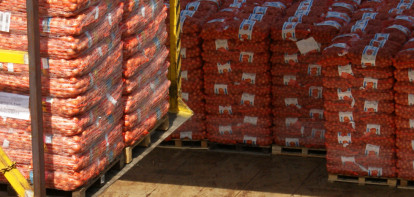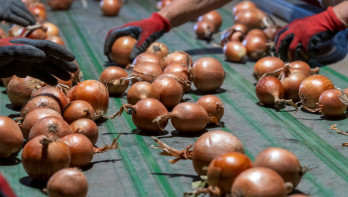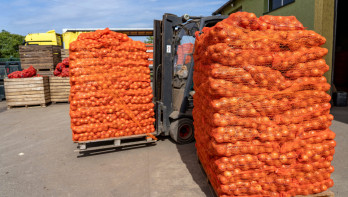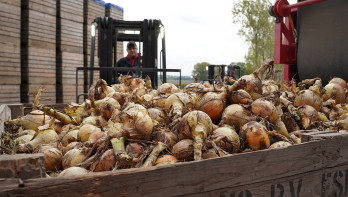Feature Onions
Dutch onions also having a though time on the fields
Just like all other crops, (sowing) onions are also having a tough time this year. A combination of waterlogging, pest damage, and soil fungal pressure are causing crops to still fail. You can find some beautiful onion fields, but they are rare. "Actually, there is no onion field to be found that has not experienced anything," says a cultivation advisor.
How extreme this sowing and planting season is, is illustrated by the situation in Zeeland. CZAV advisor Bram de Visser saw both an onion harvester and a planting machine in action on the same day. "It concerned winter-planted onions being harvested and second-year planting onions being put into the ground," he explains. "Earlier, there simply was no opportunity to plant. If you have the planting material in the shed and have incurred some costs, the decision is still made to plant."
Plant onions reasonably good
The plant onions that could be planted on time, around the end of January and beginning of February, despite the little frost that winter 2023/24 experienced, are also standing reasonably well. There are some doubts about the quality, but the harvest is yet to begin. At the end of March, there was another opportunity to plant, but especially in Zeeland, it was not always successful. It was wet there, and it still is.
Enormous differences are noticeable in sowing onions. Just like in potatoes. Where growers could get into the fields on time, a nice crop of onions has emerged, but especially the late sowing (beginning to mid-May) is facing many problems. "In these fields, spread across the Netherlands and also Belgium, we see a lot of plant loss due to the bean seed fly," says Kees Jacobs of Syngenta. "2023 was not an easy year, but 2024 is possibly even more difficult. It is especially on the late-sown fields, where the onions now have two or three leaves, that plants are being lost due to insect damage."
Lack of Vydate
In places in Drenthe and Groningen, early sowing was possible, but sometimes the stand has been thinned out by the bean seed fly. This is observed by Delphy advisor Bert Huizinga. "In the past, this insect was not such a big problem, but now it is, partly due to the absence of Vydate. You miss the side effect of this product. Alternatives like NemGuard or Belem simply do not have a comparable effect. Counts by De Groene Vlieg have shown that the pressure from onion and bean seed flies was very high early in the season. Unfortunately, this costs a lot of plants."
Arjan Bos from Hazera, who is also active in the northern Netherlands, sees similar situations. "Sometimes it looks very nice from the road, but walk into one of those fields. Often, it is disappointing. The fact is that the crop stand is very variable. Perhaps the nicest fields are on the clay soil in Oldambt. If you move west towards Friesland, it's also challenging. There has been a lot of rain in Hoogeland. We know that you need twenty plants per meter for a good yield. Many fields do not reach that."
Besides high insect pressure, Bos also encounters pythium, rhizoctonia, and fusarium in onions. "Oxygen-deficient soil promotes the development of fungi. Not all growers have had the opportunity to loosen the soil. If that possibility exists, we recommend it, but you have to be careful not to damage the root system."
Additional fertilization
Due to the excessive rainfall, onion crops have a weak root system. Another disadvantage is that nutrients - especially in waterlogged areas - have been washed away. The advisors unanimously agree that additional fertilization is necessary to keep the crop going. "You are talking about 100 kilograms of KAS," says Delphy advisor Niek Vedelaar. "We are almost at the longest day, so too much nitrogen is dangerous," adds Bos. "Potassium is perhaps even more important."
While the challenging field conditions for potatoes result in high market prices, this is certainly not the case for onions. The last sheds with old harvests are struggling to find buyers. Growers offer batches of planting onions, but sorters are not enthusiastic. The gap between what the grower asks for (€30 or more) and what the buyer offers (around €20) is too large. Especially for winter planting onions, which generally have an even higher price level. Occasionally, a field is already being harvested, but here too, weather conditions are causing disruptions.




